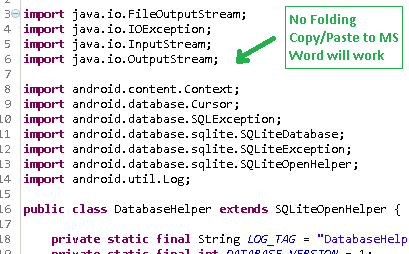Finally, you’ll learn to use Pandoc, a tool for translating between different markup languages, such as LaTeX, HTML, and Markdown. This book will not describe all the functionality that Pandoc provides, but will teach you how to translate Markdown documents, how to customize your documents using templates, and how to extend Pandoc’s functionality using filters. If that is something you are interested in, Introducing Markdown and Pandoc will get you started.
With this set of skills you’ll be able to write more efficiently without worrying about needless formatting and other distractions.
What You Will Learn
• Why and how to use Markdown and Pandoc
• Write Markdown
• Use extensions available in Pandoc and Markdown
• Write math and code blocks
• Use templates and produce documents
Who This Book Is For
Programmers and problem solvers looking for technical documentation solutions.
- Using Pandoc
- Using Pandoc To Use
- Use Pandoc To Convert Word To Markdown
- Using Pandoc To Convert Latex To Docx
- Using Pandoc To Remove

| Original author(s) | John MacFarlane |
|---|---|
| Initial release | 10 August 2006 (14 years ago) |
| Stable release | |
| Repository | |
| Written in | Haskell |
| Operating system | Unix-like, Windows |
| Platform | IA-32, x64 |
| License | GNU GPLv2 |
| Website | pandoc.org |
Pandoc is a free and open-sourcedocument converter, widely used as a writing tool (especially by scholars)[1] and as a basis for publishing workflows.[2] It was created by John MacFarlane, a philosophy professor at the University of California, Berkeley.[3] Scientific workplace 6 keygen crack codes.
Functionality[edit]
Jun 30, 2020 Fatmawati Achmad Zaenuri/Shutterstock. You can use pandoc on Linux to convert between more than 40 file formats. You can also use it to create a simple docs-as-code system by writing in Markdown, storing in git, and publishing in any of its supported formats. Tables A table can be entered by using Pandoc’s table syntax. Les miserables ost soundtrack mp3 zip. You can choose multiple styles as input, but they all are converted to the same style.
Pandoc dubs itself a 'markup format' converter. It can take a document in one of the supported formats and convert only its markup to another format. Groupme app for mac. Maintaining the look and feel of the document is not a priority.[4]
Plug-ins for custom formats can also be written in Lua, which has been used to create an exporting tool for the Journal Article Tag Suite, for example.[5]
An included CiteProc option allows Pandoc to use bibliographic data from reference management software in any of four formats: BibTeX, BibLaTeX, CSL JSON or CSL YAML.[6] The information is automatically transformed into a citation in various styles (such as APA, Chicago, or MLA) using an implementation of the Citation Style Language.[6] This allows the program to serve as a simpler alternative to LaTeX for producing academic writing.[7]
Supported file formats[edit]

Pandoc's most thoroughly supported file format is an extended version of Markdown,[8] but it can also read many other forms of:
- FictionBook (FB2)
- Jira wiki markup
- Journal Article Tag Suite (JATS)
- Markdown: Strict, CommonMark, GitHub Flavored Markdown (GFM), MultiMarkdown (MMD) and Markdown Extra (PHP Extra) variants
- OpenDocument (ODT)
- Office Open XML: Microsoft Word variant
- txt2tags (t2t)
- Wiki markup: MediaWiki, Muse, TikiWiki, TWiki and Vimwiki variants
Using Pandoc
It can create files in the following formats, which are not necessarily the same as the input formats:
- DocBook: Versions 4 and 5
- EPUB: Versions 2 and 3[9]
- FictionBook (FB2)
- HTML: HTML4 and HTML5 variants, respectively compliant with XHTML 1.0 Transitional and XHTML Strict
- InDesign ICML
- Jira wiki markup
- Journal Article Tag Suite (JATS)
- Markdown: Strict, CommonMark, GitHub Flavored Markdown (GFM), MultiMarkdown (MMD) and Markdown Extra (PHP Extra) variants
- OpenDocument (ODT/ODF)
- Office Open XML: Microsoft Word and Microsoft PowerPoint variants
- PDF (needs a third-party add-on like ConTeXt,
pdfroff,wkhtmltopdf,weasyprintorprince)[10] - Rich Text Format (RTF)
- Web-based slideshows: LaTeX Beamer, Slideous, Slidy, DZSlides, reveal.js and S5 variants[11]
- Wiki markup: DokuWiki, MediaWiki, Muse, TikiWiki, TWiki and Vimwiki variants
See also[edit]

References[edit]
- ^Mullen, Lincoln (23 February 2012). 'Pandoc Converts All Your (Text) Documents'. The Chronicle of Higher Education Blogs: ProfHacker. Retrieved 27 June 2014.
- McDaniel, W. Caleb (28 September 2012). 'Why (and How) I Wrote My Academic Book in Plain Text'. W. Caleb McDaniel at Rice University. Retrieved 27 June 2014.
- Healy, Kieran (23 January 2014). 'Plain Text, Papers, Pandoc'. Retrieved 27 June 2014.
- Ovadia, Steven (2014). 'Markdown for Librarians and Academics'. Behavioral & Social Sciences Librarian. 33 (2): 120–124. doi:10.1080/01639269.2014.904696. ISSN0163-9269. S2CID62762368. - ^Till, Kaitlyn; Simas, Shed; Larkai, Velma (14 April 2014). 'The Flying Narwhal: Small mag workflow'. Publishing @ SFU. Retrieved 11 March 2018.
- Maxwell, John (1 November 2013). 'Building Publishing Workflows with Pandoc and Git'. Publishing @ SFU. Retrieved 27 June 2014.[permanent dead link]
- Maxwell, John (26 February 2014). 'On Pandoc'. eBound Canada: Digital Production Workshop, Vancouver, BC. Archived from the original on 28 February 2015. Retrieved 27 June 2014.Cite journal requires|journal=(help)
- Maxwell, John (1 November 2013). 'Building Publishing Workflows with Pandoc and Git'. Publishing @ SFU. Retrieved 12 April 2019.
- Krewinkel, Albert; Robert Winkler (8 May 2017). 'Formatting Open Science: agilely creating multiple document formats for academic manuscripts with Pandoc Scholar'. PeerJ Computer Science. 3: e112. doi:10.7717/peerj-cs.112. Retrieved 25 May 2017. - ^'John MacFarlane'. Department of Philosophy. University of California, Berkeley. Retrieved 25 July 2014.
- ^'Pandoc User's Guide'. pandoc.org. Description. Retrieved 22 January 2019.
..one should not expect perfect conversions between every format and every other. Pandoc attempts to preserve the structural elements of a document, but not formatting details..
- ^Fenner, Martin (12 December 2013). 'From Markdown to JATS XML in one Step'. Gobbledygook. Retrieved 27 June 2014.
- ^ ab'Citations'. Pandoc User's Guide. Retrieved 2021-04-08.
- ^Tenen, Dennis; Grant Wythoff (19 March 2014). 'Sustainable Authorship in Plain Text using Pandoc and Markdown'. The Programming Historian. Retrieved 27 June 2014.
- ^'Pandoc's Markdown'. Pandoc User's Guide. Retrieved 2019-08-01.
- ^Mullen, Lincoln (20 March 2012). 'Make Your Own E-Books with Pandoc'. The Chronicle of Higher Education Blogs: ProfHacker. Retrieved 27 June 2014.
- ^'Getting started with pandoc'. pandoc.org. Creating a PDF. Retrieved 22 January 2019.
- ^See as an example MacFarlane, John (17 May 2014). 'Pandoc for Haskell Hackers'. BayHac 2014, Mountain View, CA. Retrieved 27 June 2014.Cite journal requires
|journal=(help)CS1 maint: location (link) The source file is written in Markdown.
Using Pandoc To Use
External links[edit]
Use Pandoc To Convert Word To Markdown

Using Pandoc To Convert Latex To Docx
| Wikiversity has learning resources about PanDocElectron |
Using Pandoc To Remove
